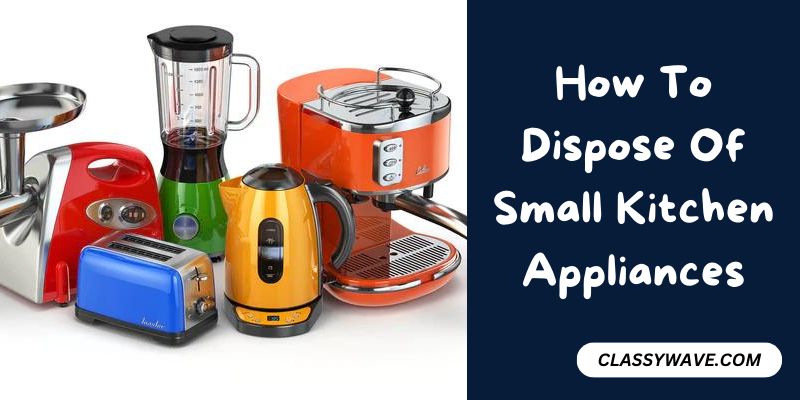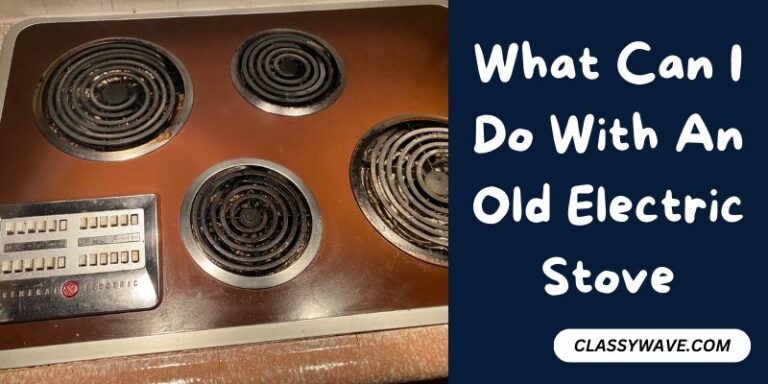How To Dispose Of Small Kitchen Appliances – Guide
In the dynamic and ever-evolving landscape of modern kitchens, small appliances weave in and out of our culinary narratives. From the faithful blender that whirs through morning smoothies to the dependable toaster crisping our favorite bread, and the aromatic coffee maker that kickstarts our day – these appliances become integral to our daily routines. However, in the ebb and flow of kitchen innovations, there inevitably arises a moment when we must bid farewell to these trusted companions.
The life cycle of small kitchen appliances, while marked by moments of convenience and culinary triumphs, also entails responsible decisions on their departure. This guide delves into the importance of proper disposal, emphasizing its critical role in minimizing environmental impact and championing sustainability. Beyond a mere goodbye, we embark on a journey to explore eco-friendly avenues, ensuring that our parting ways with small kitchen appliances align with our commitment to a greener and more responsible tomorrow.
As we navigate the intricate web of sustainable solutions, this guide aims to empower you with insights, options, and actionable steps. From assessing the functionality of your appliance to embracing innovative recycling programs, we will navigate the AIDA formula — Attention, Interest, Desire, and Action — to elevate your understanding of small kitchen appliance disposal. So, let’s not merely bid adieu; let’s bid adieu with a conscious and eco-friendly touch, creating ripples of positive change in our kitchens and beyond. Join us on this journey of responsible farewells and sustainable choices.
Understanding the Environmental Impact
Before diving into disposal methods, let’s acknowledge the environmental impact of improper disposal. Many kitchen appliances contain materials that can be harmful if not handled correctly. From electrical components to plastics, it’s essential to consider the consequences of our actions on the planet.
1. Evaluate for Donation or Repurposing
1.1 Assessing Functionality
Before rushing to dispose of your small kitchen appliance, consider whether it’s still functional. If it’s in good working condition, donating it to local charities or community centers is a fantastic way to give it a second life.
1.2 Repurposing Ideas
Get creative! Think about repurposing the appliance for a different use. For example, an old blender can become a DIY food processor or a unique decorative piece for your kitchen.
2. Recycling Electrical Components
2.1 Research Local Recycling Centers
Check with your local recycling facilities to determine if they accept small kitchen appliances. Many centers have specific drop-off points for electronic waste, ensuring that the electrical components are properly recycled.
2.2 E-Waste Recycling Programs
Explore e-waste recycling programs in your area. These initiatives specialize in recycling electronic items and preventing harmful substances from entering landfills.
3. Manufacturer Take-Back Programs
3.1 Contacting the Manufacturer
Some appliance manufacturers have take-back programs where they responsibly dispose of their products. Reach out to the manufacturer to inquire about such initiatives and how you can participate.
3.2 Utilizing Trade-In Programs
Innovative companies offer trade-in programs, allowing you to exchange your old appliance for a discount on a new one. This not only facilitates proper disposal but also encourages the responsible exchange of outdated appliances.
4. Hazardous Waste Collection Events
4.1 Identifying Hazardous Components
Certain kitchen appliances, such as coffee makers or toasters, may contain hazardous materials. Check with local authorities for hazardous waste collection events where these items can be safely disposed of.
4.2 Participating in Community Events
Many communities organize collection events for hazardous waste. Take advantage of these opportunities to ensure the safe disposal of components that may harm the environment.
Conclusion
Conscientious disposal of small kitchen appliances is a crucial step towards a sustainable future. It goes beyond parting with gadgets; it’s a deliberate choice to shape our environmental legacy. Extending appliance lifespan through careful evaluation and engaging in e-waste recycling amplifies our commitment to responsible stewardship. Manufacturer take-back programs further close the product life cycle loop collaboratively. This effort extends beyond households, contributing to a global movement against electronic waste. Proper disposal symbolizes a shift to conscious consumerism and shared responsibility for our planet’s health. Let’s recognize the power in our hands to shape a more sustainable tomorrow as we bid farewell to our kitchen companions.
FAQs
1. Can I throw small kitchen appliances in the regular trash?
No, it’s not recommended. Many appliances contain materials that can be harmful to the environment. Explore recycling options or donate them instead.
2. How do I find local recycling centers for small appliances?
Check with your local municipality or use online resources to locate recycling centers that accept small kitchen appliances.
3. Are there any regulations for disposing of electronic waste?
Yes, many regions have specific regulations for the disposal of electronic waste. Check with local authorities to ensure compliance.
4. Can I recycle small kitchen appliances with damaged cords or parts?
Yes, many recycling centers accept appliances with damaged parts. However, it’s advisable to remove any detachable parts before recycling.
5. Are there any incentives for recycling small kitchen appliances?
Yes, some manufacturers offer incentives or discounts for recycling old appliances through their trade-in programs. Check with the appliance brand for more information.







